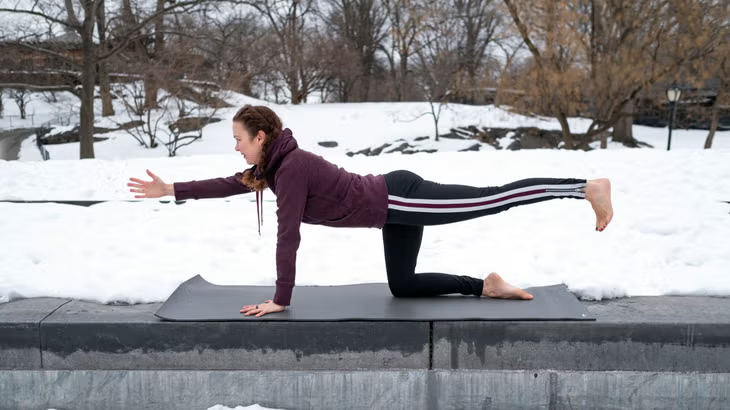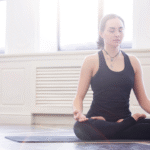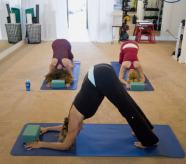Three Ways to Balance Your Winter Yoga Practice
A Seasonal Guide to Moving, Breathing, and Restoring in the Colder Months
Winter has a way of slowing everything down. The days are shorter, the nights are longer, and the energy around us feels heavier and more introspective. Nature hibernates, and so do we—at least in some ways. Our routines shift, our cravings change, and even our yoga practice needs to adapt.
According to Ayurveda, winter is dominated by Kapha and Vata doshas—which bring with them qualities of cold, heaviness, dryness, and stillness. These qualities can throw us off balance if we don’t adjust our daily habits and movement practices accordingly.
So how can we use yoga to stay warm, energized, and emotionally grounded during this season? Let’s explore three simple but powerful ways to balance your winter yoga practice—and support your body, mind, and spirit through the colder months.
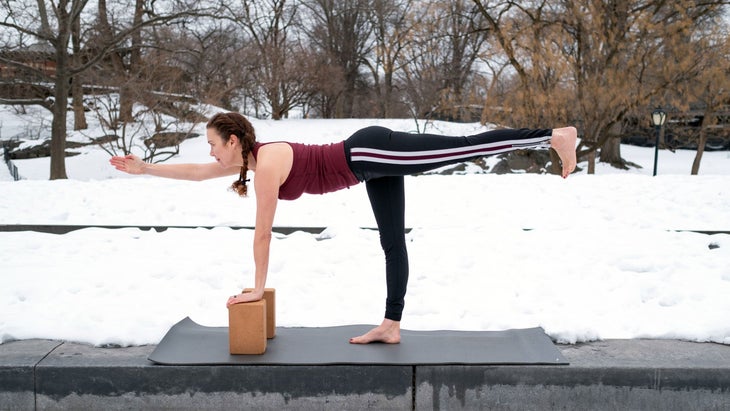
1. Warm Up from the Inside Out: Build Heat and Circulation
In winter, the natural coldness and stillness of the season can slow everything down—your metabolism, your motivation, and even your mood. That’s why it’s important to bring a little fire into your yoga practice.
The goal here is to stimulate your inner heat, get your blood flowing, and combat that heavy, sluggish feeling that can sneak up during cold days.
Key Practices:
- Sun Salutations (Surya Namaskar): A few rounds in the morning are perfect to generate heat, stretch the body, and wake up your muscles.
- Standing poses like Warrior I & II, Chair Pose, and High Lunge help activate the legs and build strength.
- Core work like Boat Pose and Plank helps keep your internal fire (Agni) strong and steady.
- Dynamic movement: Flow through sequences with a little more intensity than usual to build warmth. Think vinyasa-style or strong hatha flows.
Don’t forget:
Keep the room comfortably warm—not overheated. You want to build internal heat, not exhaust yourself. Layer up, and slowly peel off clothing as your body warms.
Pro Tip: Practice in the morning when Kapha energy is highest. This helps you avoid sluggishness and sets a productive tone for your day.
2. Nourish Stillness with Grounding and Restorative Poses
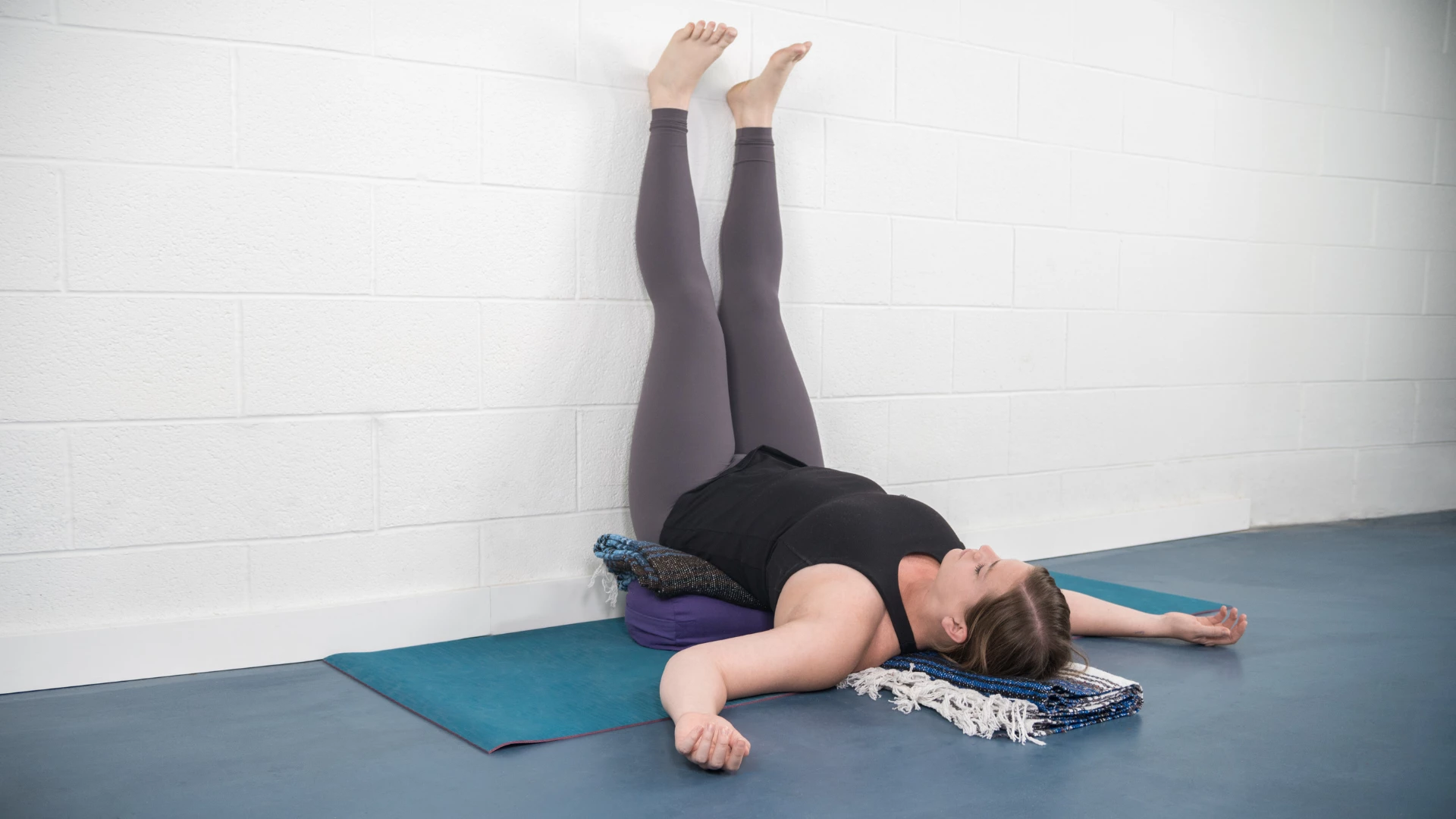
While heat and movement are essential in winter, the season also invites deep rest and reflection. Instead of fighting that natural pull to slow down, we can work with it. This is the perfect time to turn inward and add grounding, nourishing poses to your practice.
Why it matters:
Winter’s Vata qualities (cold, dry, and mobile) can leave you feeling anxious, scattered, or depleted. Meanwhile, excess Kapha can cause lethargy or depression. Balancing both means moving intentionally and resting deeply.
Grounding Practices:
- Long-held seated poses like Forward Fold (Paschimottanasana), Pigeon Pose, or Butterfly Pose help calm Vata and release tension.
- Restorative poses like Legs-Up-the-Wall (Viparita Karani) or Supported Bridge allow the nervous system to relax.
- Yin yoga targets connective tissue and encourages stillness—perfect for winter nights.
- Savasana with a blanket or eye pillow helps seal in your practice and soothe the senses.
Add in:
- Slow, rhythmic breathwork like alternate nostril breathing (Nadi Shodhana) or Ujjayi breathing to regulate and ground.
- A focus on longer exhales to promote calm and reduce stress.
This is a season to balance effort with ease—so don’t shy away from adding restorative sequences to your weekly flow. You’ll return to your day feeling more centered, steady, and at peace.
3. Align with the Season Through Intention and Ritual
Winter is the season of introspection, and your yoga mat can be a sacred space for turning inward, setting intentions, and connecting to your deeper self.
Cultivate intention:
Start your practice by taking a moment to reflect. Ask yourself:
- What do I need today—movement or stillness?
- Where in my body do I feel cold or tense?
- How can I nourish myself during this season?
Journaling after yoga, setting seasonal goals, or practicing gratitude can deepen this connection.
Embrace winter rituals:
- Light a candle before you begin to symbolize your inner fire.
- Practice by a sunny window to soak in natural light.
- Use aromatherapy—scents like cinnamon, clove, orange, or frankincense can support warmth and uplift your mood.
- End your session with a short meditation or mantra (such as “I am grounded. I am supported.”)
These small seasonal touches transform your winter yoga from routine into ritual—something meaningful, healing, and supportive of your unique needs.
Daily Winter Yoga Routine (Sample)
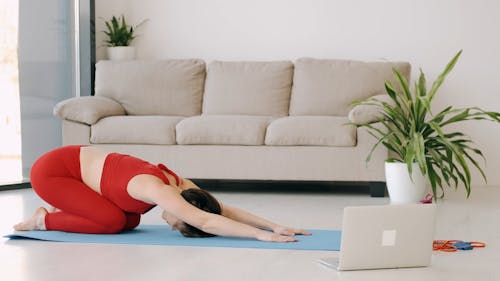
Want a simple winter yoga template? Try this:
- Warm-Up (5–10 mins):
- Cat-Cow
- Spinal rolls
- Gentle twists
- Energizing Flow (10–20 mins):
- Sun Salutations
- Warrior sequences
- Core engagement (Boat Pose, Plank)
- Grounding Postures (10 mins):
- Pigeon Pose
- Seated Forward Fold
- Low Lunge
- Restorative Finish (5–10 mins):
- Legs-Up-the-Wall or Reclined Butterfly
- Savasana with a blanket
- Gentle breathwork or meditation
Even a 20- to 30-minute session can help reset your body and mind in the heart of winter.
Winter Wellness Tips to Complement Your Practice

Yoga works best when paired with seasonal self-care. Try these winter-friendly lifestyle tips:
- Eat warm, cooked meals: Think soups, stews, root vegetables, and digestive spices like ginger, turmeric, and cumin.
- Stay hydrated: Even when it’s cold, your body needs plenty of fluids—warm herbal teas are ideal.
- Get sunlight: If the days are short, take breaks to sit near windows or invest in a light therapy lamp.
- Go to bed early: Honor winter’s slower rhythms by winding down before 10 p.m.
- Dress in layers: Keep your joints and extremities warm during practice and beyond.
Ayurveda teaches us that living in tune with nature—not against it—is the foundation of health and balance.
Table of Contents
FAQs: Winter Yoga Practice
Q: Can I still do hot yoga in winter?
A: You can, but be cautious. Overheating or sweating excessively can deplete your energy. Choose heated classes in moderation, and balance them with cooling breathwork and restorative poses.
Q: What if I feel unmotivated to practice in winter?
A: That’s totally normal! Energy dips are common. Start with 5–10 minutes of gentle movement—just getting on the mat counts. Often, motivation follows movement.
Q: How often should I practice yoga in winter?
A: Aim for at least 3–4 days a week. Consistency matters more than intensity. Mix energizing flows with grounding or restorative days to stay balanced.
Q: Are there specific poses I should avoid in winter?
A: Avoid long periods of stillness in cold environments, or overly fast-paced flows that can exhaust you. Listen to your body—if it feels too much or too little, adjust accordingly.
Q: Can I meditate instead of doing a physical practice?
A: Absolutely. Meditation is powerful in winter and helps calm Vata energy. You can also combine both—movement followed by stillness creates a balanced practice.
Conclusion: Make Winter Yoga Your Anchor
Winter doesn’t have to feel heavy, isolating, or unproductive. With the right adjustments, your yoga practice can become a powerful anchor—keeping you warm, grounded, and emotionally resilient throughout the season.
Whether it’s through energizing flows that build heat, grounding poses that calm your nervous system, or rituals that connect you to your inner fire, winter yoga helps you stay in rhythm with nature while tuning into your own inner wisdom.
So don’t wait for spring to feel alive again. Roll out your mat, light a candle, and move with intention. Let winter become a time of deep nourishment, gentle strength, and steady presence.




